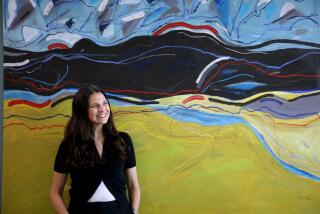Epicenter under Chino Hills
The magnitude 5.4 earthquake that shook the Los Angeles area Tuesday had a relatively shallow origin, about eight miles under Chino Hills.
The temblor southeast of Diamond Bar was typical of most Southern California quakes -- close enough to the surface to be felt sharply, but deep enough for the effects to be felt over a broad area.
Deeper quakes are unusual in this area, typically occurring only along subduction zones where the Earth’s tectonic plates bump into one another. They are more characteristic of the Pacific Northwest, Japan and Sumatra, said Caltech seismologist Kate Hutton.
By late Tuesday afternoon, researchers had not yet identified the specific fault involved. Hutton noted that there is a tangle of small faults in the Chino Hills region and that it will take time to identify the precise one involved.
Preliminary analysis indicated that the quake occurred when a block of crust on one side of the fault was thrust up and over the crust on the opposite side; it also moved sideways relative to the crust on the opposite side. This combination is known as oblique- reverse faulting.
Within the first hour after the quake, there had been 27 aftershocks, the largest a magnitude 3.8 temblor about 10 minutes after the initial jolt at 11:42 a.m. A magnitude 3.6 shock occurred two hours after the first quake. Most of the aftershocks, however, were magnitude 1 or 2, and researchers expected them to continue for a day or more.
As with any Southern California quake, Hutton said, there is about a 5% chance that the quake is a foreshock of a larger one. But the odds of such an event occurring decline with time and, by 24 hours after the initial shock, the risk is down to 1%, she said.
Tuesday’s temblor was the largest in that part of the Southland since the magnitude 5.9 Whittier Narrows quake in 1987. That quake, centered about six miles underground, caused substantial damage to buildings in the local area, primarily those made of unreinforced brick.
Reinforcements to buildings precipitated by that event and the magnitude 6.7 Northridge earthquake in 1994 were most likely responsible for the absence of damage in Tuesday’s temblor, Hutton said.
She said the area was overdue for a moderate quake. “We had forgotten what a big earthquake felt like -- at least I did,” she said. “We should consider this a drill for the Big One that is going to happen someday.”
--
More to Read
Start your day right
Sign up for Essential California for news, features and recommendations from the L.A. Times and beyond in your inbox six days a week.
You may occasionally receive promotional content from the Los Angeles Times.






